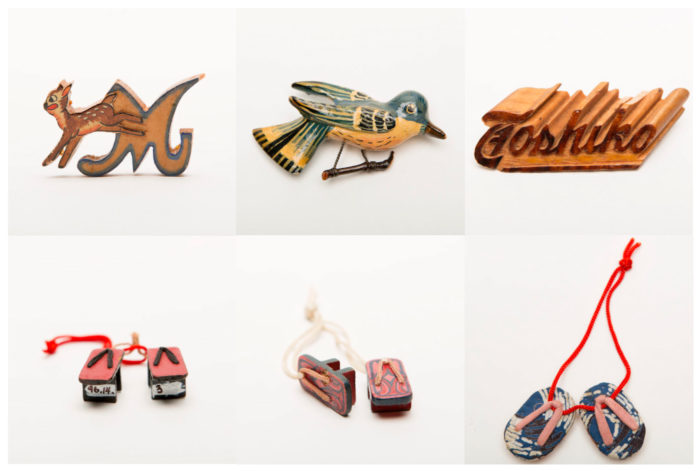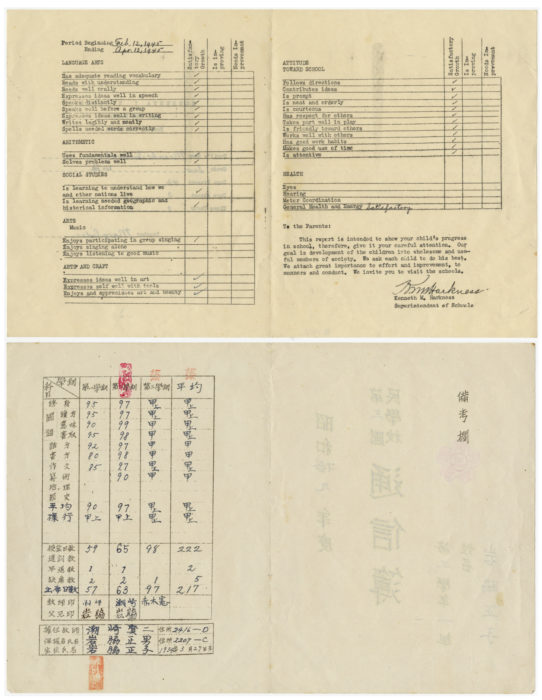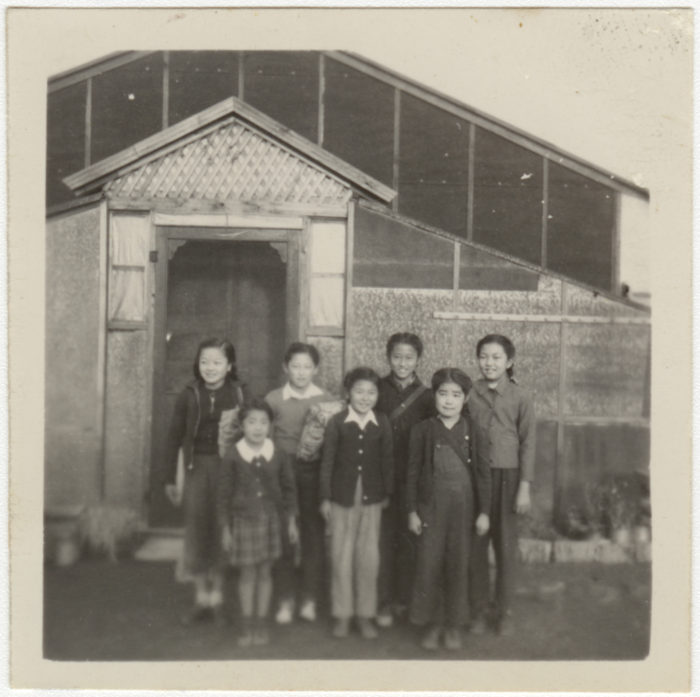Childhood Incarcerated

Japanese American National Museum, Gift of Masako Iwawaki Koga (96.14.9)

Japanese American National Museum, Gifts of Masako Iwawaki Koga (2003.37.2, 2003.37.6, 2003.37.11, 96.14.3)
The wooden pins pictured were made by Masako’s grandmother Tsuya Mukai while incarcerated at Heart Mountain, Wyoming. Tsuya sent them to Tule Lake, California, where her daughter Toshiko and granddaughters Yaeko and Masako were living.
- What do you learn about Tsuya Mukai by looking at these pins?
The tiny decorative geta (Japanese footwear) were made by Masako while incarcerated at Tule Lake. Notice how detailed they are.
- What conclusions can you draw about Masako by looking at these?
- Why do you think Masako made these?
Many crafts emerged from America’s concentration camps as Japanese American inmates found ways to expend their creative energy. The fact of their barbed-wire confinement did little to suppress the Japanese Americans’ desire to bring some normalcy to their mundane camp lives.

Japanese American National Museum, Gift of Masako Iwawaki Koga (96.14.6, 96.14.7)
These are two report cards belonging to 11-year-old Masako. They are from her time spent at Tule Lake Segregation Center.
- What do you notice about these cards?
Masako attended school in English, studying subjects such as language arts, arithmetic, social studies, and arts. She also studied Japanese, which is why one of these report cards is in Japanese.
- Based on the evidence in these two documents, what can you learn about Masako?
- Based on the evidence in these two documents, what can you learn about the community at Tule Lake?
- Why would it be important for Masako, a young American of Japanese ancestry, to also study Japanese?

Japanese American National Museum, Gift of Masako Iwawaki Koga (96.14.10)
- Where do you think this photograph was taken?
- Who do you think is depicted in this photograph?
- What visual evidence leads you to these conclusions?
Pictured at the far right is Masako Murakami. She was about 11 years old when this photograph was taken at the Tule Lake Segregation Center in California. She is shown here with friends who lived on the same block as she did.
- What expressions do you see on the faces of these individuals?

Japanese American National Museum, Gift of Masako Iwawaki Koga (96.14.9)
Read this note once again. Masako was born in 1934 and received this letter in 1945 as she was leaving Tule Lake. If Masako spent four years incarcerated, as is indicated in this note, she would have been incarcerated in America’s concentration camps from approximately age 7 to 11. Now Imagine yourself at that age.
- How would you spend your time behind barbed wire?
- How would you build community?
- How would you preserve your culture?
Masako attended school, did crafts, and made many friends, as evidenced by the autographs in her book. It is clear that she was a young person who made the best of her situation.
Return to Community & Culture
